California energy crisis
description: energy crisis in 2000–01 in California
23 results
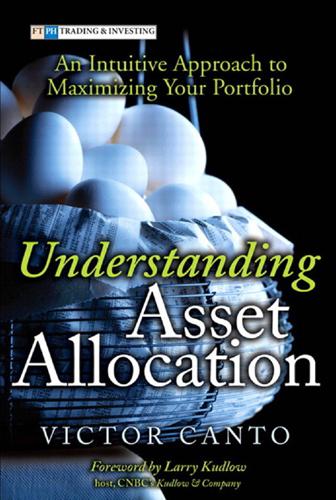
Understanding Asset Allocation: An Intuitive Approach to Maximizing Your Portfolio
by
Victor A. Canto
Published 2 Jan 2005
Local and country effects are here to stay. Special interest groups are always creating artificial barriers partially segmenting some markets. In other cases, a local effect could be due to immobile natural resources (for example, those that bring on tourism) or explicit economic policies (for example, those that brought on the California energy crisis). Regional and country effects can also create market segmentations representing market shares simply too small for larger global companies to go after. Given a market’s size in relation to that of a company, it cannot be worth it for a larger company to alter its overall plans to capture a small market.
…
That is, as long as a price charged in-state is below the out-of-state price plus the transportation cost, it is not profitable to arbitrage the difference in prices and no foreign competition (supply) is forthcoming. This analysis plays into the California example. Looking back, it is apparent environmental regulations were a significant contributor to the California energy crisis. For instance, the focus on clean fuels made it difficult to build plants burning anything other than natural gas. The impact of these policies was to increase demand for natural gas to the point where, on the basis of the British thermal unit (BTU), a standard energy measure, natural gas became a premium fuel.
…
As I mentioned earlier, larger corporations, or large-capitalization stocks, are more likely than not to have production facilities outside of their home states. Hence, the California effect has been much weaker for California’s large-caps. Table 10.1 Performance of size-related portfolios of California-headquartered companies during the California energy crisis: January 2001–April 2001. All Nontech Benchmark Large –26.14% –9.53% –9.73% Mid –8.58% –11.12% –7.99% Small –10.54% –12.52% –5.69% Source: Research Insight But to truly identify the California factor, one needs to apportion some part of production to California. To do this, one needs to make a simple generalization: The smaller the company, the greater the likelihood it is a true Chapter 10 Location, Location, Location?
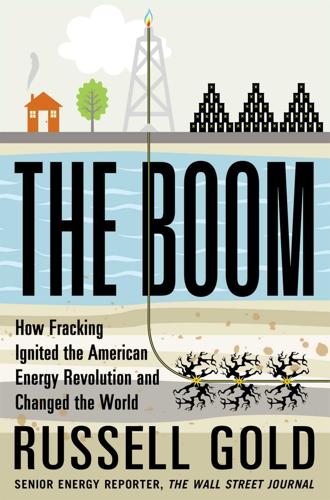
The Boom: How Fracking Ignited the American Energy Revolution and Changed the World
by
Russell Gold
Published 7 Apr 2014
Hughes #1 well, 91–92 Doochin, Jeremy, 253 Dow Chemical, 70 Downs, Roger: gas and, 255, 257, 259, 261–62 New York and, 255–59, 261–63 Pope and, 257, 259 Ross #1 and, 255–58, 262 Drake, Edwin L., 63–65, 67 drilling funds, 138–42 Duke University: basketball team of, 165–66 McClendon’s enrollment at, 8–9, 156, 164–68, 195, 207 Dunham, Archie, 208 Dushore, Pa., 226 Eads, Ralph, III, 250 California energy crisis and, 180, 182–84 Chesapeake-EIG joint venture and, 207 Chesapeake’s finances and, 163, 166, 185, 188, 195–96, 205, 207 Duke basketball and, 165–66 energy trading of, 180–85 investment banking career of, 163, 166, 180, 185, 188, 195–96 McClendon’s relationship with, 163, 165–66, 177–78, 180, 185, 188, 195–96, 204–5 Eagle Ford Shale, 57, 192 Eagles Mere, Pa., 215 earthquakes, man-made, 31 East Virgil prospect, 170–73 economics, economy, 5–6, 38, 73, 96, 172, 301–7 Barnett Shale and, 104, 124 crises in, 52, 54, 79, 138, 192, 197, 200, 203, 303–5 Fast on, 79 fracking and, 8, 24–25, 35–36, 43, 77, 81–82, 85, 103–4, 113, 124, 126–27, 135, 240, 261, 272 gas and, 8–9, 35, 74, 102–3, 129–31, 138–39, 141–42, 145, 156, 178–80, 182–89, 191, 194, 197, 203–4, 206, 209, 225, 240, 242, 249, 251, 262, 264, 266, 268, 285, 298, 302, 304–5 Meadowses on, 94–95 in Mehoopany, 26 oil and, 8–9, 50, 56–57, 74, 125, 129, 133–34, 138, 141, 167, 179, 282, 285 recessions and, 9, 50, 54, 167 of Sullivan County, 225–26, 235, 237 U.S. energy policy and, 162, 303–4 see also taxes EIG Global Energy Partners, 207–8 electricity, 14 California energy crisis and, 180, 182–83 coal and, 5–6, 32, 35, 241, 243–45, 248, 262–65 deregulation of, 266 gas and, 5, 32, 35–36, 59, 178, 180, 225, 241, 244–45, 248, 262–65, 267 prices of, 183, 225, 237 renewable energy and, 35, 113, 254, 263, 301–2 Ellenberger formation, 143–45, 153–54 El Paso, El Paso Merchant, 195 California energy crisis and, 182–84 energy trading of, 180–86 El Paso Natural Gas, 80, 82 Emerson, Arne, 295 employees, employment, 21–22, 25, 47 in Bakken Shale, 46, 52 Chesapeake and, 159, 191, 208 energy consumption and, 5 gas and, 304–5 Gearhart and, 282, 291 incomes of, 62 layoffs and, 75, 115, 251, 257, 282 McClendon’s background and, 167–68 Marcellus Shale and, 228–29 in Mehoopany, 26 New York and, 261 North Dakota and, 37–38, 46, 57 oil prices and, 125 Sullivan County and, 214, 225–26, 236 unemployment and, 46, 186 well construction integrity and, 286–88, 290 energy, 94, 239, 270, 284 change and, 12, 36, 50, 151–52, 155, 213, 302–3, 306 Chesapeake’s finances and, 194–95 Chu on, 58–59 conservation of, 72–73, 83, 99, 301 Cooke and, 280 crises in, 82–83, 180, 182–85, 282 deregulation of, 178, 180–81 ethics issues and, 12 Fast and, 72–73, 79 fracking and, 2, 5–6, 13, 17, 29, 34–36, 81–82, 128, 143, 238, 240, 260, 272, 300–301, 303, 305–8 in future, 232, 266, 268, 301 Hanger and, 266–67 independents and, 2–5 McClendon and, 8–10, 158–63, 175, 178, 187, 189, 194, 241, 248–50 mineral rights and, 13, 23–24, 191 Mitchell and, 90, 96–97, 106, 113 Nixon on, 50, 81, 83, 162 Perot Museum and, 295 Pope and, 241, 254, 251, 259 and proximity of wells, 19 shales and, 14–15, 25–27, 34, 151–52, 155, 302–3, 305–7 sharing information on, 190 Steinsberger and, 121–22 Sullivan County and, 210, 213–14, 224, 234–37 trading in, 180–86, 197–201, 245 U.S. policy on, 50, 58–59, 81, 83, 162, 301–8 Ward and, 168–69 see also specific sources of energy Energy Department, U.S., 82, 272, 306 Engelder, Terry, 233–36 Enron, 173–74, 185, 201, 205 energy trading of, 180–81 environment, 4–6, 33–34, 276, 301 of Burkburnett, 20–21, 34 coal and, 242, 245–48 Deepwater Horizon and, 260–61, 274 fracking and, 5–6, 9–10, 13, 30, 59, 80, 240, 248, 263, 292, 309 gas and, 225, 245, 261, 267 Hanger and, 266–67 McClendon and, 240–41, 249–51, 253 mineral rights and, 23 Mitchell and, 9–10, 95–97 modern shale communities and, 25, 27 New York and, 256–58, 262 Pope and, 240–42, 249–51, 254, 259 Sullivan County and, 214–15, 222–24, 232–37 water contamination and, see under water see also climate change Environmental Defense Fund, 261 Environmental Quality Commission, Tex., 309 EOG Resources, 55, 188, 228–29, 295 Etheridge, Carolyn, 107 Ewing, Jay R., 149–50 Exxon, Exxon Mobil, 3, 21, 71, 91, 134, 196, 267, 304 Cooke and, 271, 277–80, 288 Southlake and, 298–99 Tillerson and, 24, 58, 154, 300, 303 Farris, Riley “Floyd,” 71–76 cement and, 71–72, 75 fracking and, 72–73, 75–76, 78 Fast, Bob, 72–79 background of, 72, 79 fracking and, 73, 75–76, 78–79, 92 Fast, Rob, 73, 79 Fayetteville Shale, 155, 192 Federal Energy Regulatory Commission (FERC), 183–84 Fersing, Jan, 204 Finger Lakes, 258 Fish, Anthony, 61–62 Flatirons Development, 286–90 Fort Worth, Tex., 5, 117, 188, 204, 227, 281, 295–96, 298 Barnett Shale and, 3, 15, 123, 145, 150, 153–54, 295 Grimes’s lawsuit and, 22 mineral rights leases and, 88, 150, 153–54, 295 Mitchell and, 7, 87–88, 151 oil engineering community in, 126–28 Steinsberger and, 115–16, 121, 125–27 Trinity Aquifer and, 108 water contamination and, 97–98 Fort Worth Petroleum Club, 153 Foster, Brad, 143–45, 147–48 Founders Well Participation Program, 202–3, 208 Four Sevens Oil, 150–51 Fox, Josh, 239, 260, 267 fracturing, hydraulic fracturing (fracking): Bakken Shale and, 38–49, 51–57, 60–62, 303 Barnett Shale and, 103–4, 113, 117–25, 128–30, 143–49, 153–54, 227, 303 Bartonville and, 299–300 benefits of, 19, 25–27, 33, 261 Cooke and, 270–71, 280–81, 292 Devon and, 143–44, 149, 155, 190 early experiments on, 54–55 environment and, 5–6, 9–10, 13, 30, 59, 80, 240, 248, 263, 292, 309 of existing wells, 74–77, 103, 129 Farris and, 72–73, 75–76, 78 finances of, 8, 24–25, 35–36, 43, 77, 81–82, 85, 103–4, 113, 124, 126–27, 135, 240, 261, 272 Foster on, 143, 145 gas and, 2–3, 5–6, 13, 18, 23–24, 27–31, 33, 73–74, 76–78, 80–85, 92, 120–22, 126–27, 129–30, 135, 143, 147–48, 188, 248, 262, 298, 303, 305, 309 Gold’s parents’ land and, 11–12, 31–32 Hail Mary, 55–56 health impact assessments and, 308 history and, 63–64, 66–68, 72–85, 92, 282 improvements in, 43, 56–57, 78–79, 309 of Klepper, 73–74 McClendon and, 158, 163–64, 188, 239–41, 267 Marcellus Shale and, 221, 227–29, 231–32 mineral rights and, 23–24, 123, 296 Mitchell and, 8–10, 24, 84–85, 92, 103–4, 113, 117–19, 121–23, 125–26, 129, 134–36, 143–44, 190, 271 negative associations of, 297 New York and, 255–59, 261–62 North Dakota and, 37–49, 51–57, 60–62, 122 oil and, 2–3, 5–6, 13, 18, 23, 27–30, 33–34, 40–41, 43–44, 48, 52, 54, 62–64, 66–70, 75–78, 80, 82, 103, 297, 303, 305 opposition to, 64, 211, 233, 235, 237–40, 248, 257–63, 267, 296–98, 309 Perot Museum and, 295–96 Pope and, 240–41 and proximity of wells, 19–20, 26–27, 30 prevalence of, 2–3, 12, 24–25, 27–28, 44, 296, 303, 305 refracking and, 129, 135–36 regulation of, 25–26, 30, 32–33, 52, 306 renewable energy and, 34–35, 240, 306 Roberts’s torpedo and, 63, 66–70, 73 safety precautions for, 38, 40–41, 44–45, 73 slick-water, 73, 121–22, 125, 128–29, 135, 143, 190, 227 Southlake and, 298–99 spellings of, 297 Stanolind and, 43, 74, 78–79, 92, 122, 282, 297 Steinsberger and, 117–26, 128–30, 133, 190, 301 Sullivan County and, 210–11, 218, 221, 226, 233, 237 support for, 233–35, 237, 296–98 technology of, 2, 5–10, 13–15, 17–18, 27–31, 33, 40, 42, 47–48, 51–57, 60–61, 63–64, 66–68, 72–73, 75–85, 92, 103, 116–22, 124, 126–29, 135, 143–44, 146–47, 154, 190, 226–27, 229, 258, 280, 286, 292, 306–7 U.S. energy policy and, 303, 305–8 water and, see under water well construction integrity and, 286, 289–90, 308 Wise County and, 92–93, 103 Frankel, Paul, 305–6 Fredericksburg, Battle of, 66 Fredonia, N.Y., 18 front running, 199 Fruitland coal formation, 142 Fu Chengyu, 163 Fudge, Barney, 23 Fullenwider, Sarah, 151 Fuller, Buckminster, 95 Galveston, Tex., 88–90, 112 Gardere & Wynne, 105 Gasbuggy, Project, 80–81 Gasland, 260 gasoline, 2, 6, 40, 49, 58, 73–74, 164, 265 Gas Research Institute, 84–85 Gastem USA, 255–56, 258, 262 Gearhart, Marvin, 281–86, 291–92 background of, 281–83 Cooke’s RDT and, 281, 283–85, 292 well construction integrity and, 281–82 Geo-Shot, 291 Germany, 279, 301–2 Getz, Bob, 226 Ghawar, 17 “Ghost Ridin’ Grandma,” 269–70, 284 Glenpool, Okla., 104–5 Golden Trend gas field, 168–69 Goldman Sachs, 113, 134, 163, 201 Goodman Drilling, 21–22 Graby, William, 261 Graham Shoop #6 well, 147 Great Depression, 79, 138, 200 green completions, 32, 309–10 greenhouse gases, 32, 235, 250, 262–66, 308 Greenspan, Alan, 304 Grigsby, Jennifer, 160–61 Grimes, Ottis, 20–23, 25, 27, 34, 36 lawsuit of, 22–23, 26, 300 mineral rights lacked by, 21–22, 25 guar, 51–54 Gulf of Mexico, 16, 60, 90, 195 Deepwater Horizon and, 260, 273–74 oil and gas drilling in, 19, 75, 113, 134, 164, 260, 273–74 Hall, Jeff, 134–37 Halliburton, 52, 83, 271, 274 Cooke’s RDT and, 279, 283 Halliburton Oil Well Cementing Company (HOWCO), 76 Hallwood Group, 153–55 Hamm, Harold, 171–72 Hanger, John, 266–67 Hann, Megan, 171–72 Hargis, V.
…
But there was another reason that gas prices soared in late 2000 and early 2001, helping resurrect Chesapeake’s finances. And it had nothing to do with supply, demand, or cold weather. It was market manipulation by a group of energy traders that left California with exorbitant gas prices and rolling electricity blackouts. And one of the key players at the heart of what became known as the California energy crisis was McClendon’s best friend: Ralph Eads. By July 1999, Eads had spent most of his career in investment banking, with a couple unsuccessful forays into drilling wells. In the mid-1980s, Eads had left Merrill Lynch to become chief financial officer of a new Houston company called American Energy Operations.
…
I first reported some details of Chesapeake’s near-death experience in the Austin Chalk and meeting with Calpine in a 2006 front-page article in the Wall Street Journal, and fleshed out details for the book by looking through news articles and corporate filings. Getting to the bottom of the California energy crisis and El Paso’s and Ralph Eads’s role required a lot of reading and digging through Federal Energy Regulatory Commission dockets. Some of the most interesting documents have been made public only in recent years and were not available to reporters covering the story as it unfolded. The March 2003 FERC final report, cited below, is the best overview document.
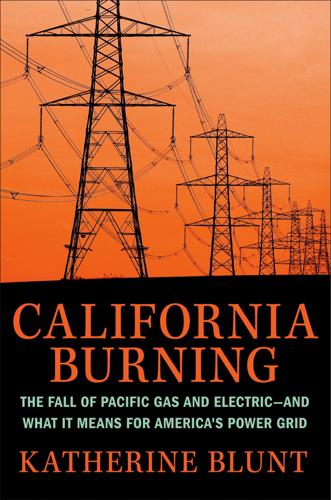
California Burning: The Fall of Pacific Gas and Electric--And What It Means for America's Power Grid
by
Katherine Blunt
Published 29 Aug 2022
GO TO NOTE REFERENCE IN TEXT Glynn told Richard that: Richard, interview. GO TO NOTE REFERENCE IN TEXT He just couldn’t tell him: Richard, interview. GO TO NOTE REFERENCE IN TEXT Davis, a thin man: Gray Davis, “California Energy Crisis,” April 5, 2001, Sacramento, CA, C-SPAN broadcast, archived video, 5:51, c-span.org/video/?163609-1/california-energy-crisis. GO TO NOTE REFERENCE IN TEXT Richard looked at Glynn: Richard, interview. GO TO NOTE REFERENCE IN TEXT For Davis, it was a: David Lazarus, “PG&E Files for Bankruptcy; $9 billion in Debt, Firm Abandons Bailout Talks with State,” San Francisco Chronicle, April 7, 2001.
…
Analysts dialed in for a special call with executives. Rumors were flying that the company would have to seek bankruptcy protection. Williams didn’t rule it out. But she said the company was working with lawmakers to try to figure out a way to avoid it. “You have to realize that many of the lawmakers here in California vividly remember the energy crisis and what came as a result of that,” she said. At that point, the company faced more than two hundred civil lawsuits. Individuals had filed them, as had cities and government agencies. Insurance companies were also seeking reimbursement for claims they had paid to homeowners and businesses.
…
The company disclosed that it had discovered damage to the line during a midday aerial patrol. “This information is preliminary,” the report said. Investors read between the lines. By the end of the following week, shares in PG&E had fallen by nearly half, their steepest plunge since the company filed for bankruptcy protection after the California energy crisis. Its stock was in free fall for five days straight. PG&E told investors that it had exhausted its lines of credit and warned that its $1.4 billion of insurance coverage might not be enough to cover claims against the company if it were found liable for the fire. Analysts estimated that the company’s total liability, including the 2017 fires, could reach $30 billion.
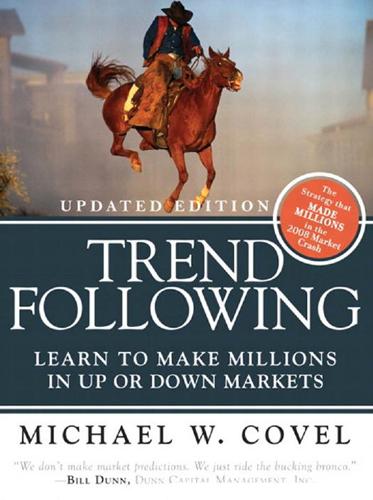
Trend Following: How Great Traders Make Millions in Up or Down Markets
by
Michael W. Covel
Published 19 Mar 2007
In a press release, she argued: “I am writing to request an additional hearing to pursue what role Enron had in the California energy crisis with respect to market manipulation and price gouging. Enron’s ability to deal in complex unregulated financial derivatives in the natural gas market while controlling a tremendous share of the gas trading market provided Enron the ability to manipulate market prices. This was very likely a key factor in driving up gas and electricity prices leading to the California energy crisis.” It has been said that the Enron crisis cost California $45 billion over two years in higher electricity costs and slowed economic growth.
…
Dave Barry, humor columnist 100 90 80 70 60 50 40 30 20 10 DJ F MAMJ J ASONDJ F MAMJ J ASONDJ FMAMJ J ASONDJ FMAMJ J ASONDJ FMAMJ J ASONDJ 97 98 99 00 01 02 03 CHART 4.23: Enron Stock Chart Source: Barchart.com Not only were there massive winners and losers in Enron stock, but the zero-sum game sprang into full force during the California energy crisis in late 2000 and during 2001. Enron was a primary supplier of natural gas to California. California, bound by its own flawed deregulation schemes, freely signed long-term contracts with 0 146 They say patience is a virtue. For me patience is synonymous with discipline. You must have the discipline to know that markets change and poor periods are followed by good period.
…
He also noted that Campbell had been long bonds and short a number of global stock index futures contracts ahead of the attack because of established trends.23 Their entries into positions were not triggered by actions on September 11. Their decisions to be in or out of the market were set in motion long before the unexpected event of September 11 happened. Although Enron, the California energy crisis, and September 11 are vivid illustrations of the zero-sum game with trend followers as the winners, the story of Long-Term Capital Management in the summer of 1998 may be the best trend following case study. Event #3: Long-Term Capital Management Collapse Long-Term Capital Management (LTCM) was a hedge fund that went bust in 1998.
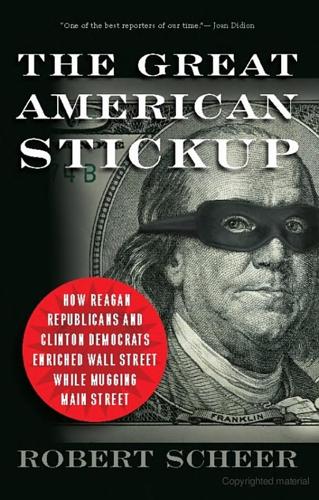
The Great American Stickup: How Reagan Republicans and Clinton Democrats Enriched Wall Street While Mugging Main Street
by
Robert Scheer
Published 14 Apr 2010
The next day the power plant was taken offline, forcing California to employ rolling blackouts to manage the emergency, which affected up to a half million consumers, according to the western power grid’s daily logs. A Snohomish County PUD press release detailed more of the taped transcripts:Enron employees talked openly about “stealing” up to $2 million a day from California during the energy crisis. Traders also joke about taking money from “Grandma Millie” and making “buckets of money” from over-scheduling electricity transmission lines and taking power plants off line. Related financial documents, covering the period of January 2000 through mid-2001, showed Enron manipulated energy markets on 88% of the days the PUD tracked.
…
See Financial bubbles Buffett, Warren Bundled derivatives Bush, George H. W. (Bush I) Bush, George W. initiates bailouts -Paulson discussion on collapsing economy political contributions preceded by roots of collapse refuses to regulate Enron energy trading Treasury overpays in purchases of toxic assets California energy crisis and Enron corrupt activity exposed deregulated energy market effects price caps requested by officials ricochet scheme rolling blackouts, consumers bilked Campaign contributions by Arnall to G. W. Bush, Republicans by Enron, Goldman by financial services industry by Ken Lay to candidates linked to international projects, trade missions by lobbyists to Obama from private, Wall Street, funds to Phil Gramm from Enron by Wall Street Capitalism and government restraint on corporate actions Carpenter, Michael A.
…
“Jamie,” Dorgan, Byron Douglas, Jack, Jr. Dynegy Earned Income Tax Credit (EITC) Edgerton, Henry Energy trading California’s rolling blackouts Enron loophole allows manipulative practices exempt from regulatory scrutiny power plants taken offline by Enron price caps requested for California energy crisis Enron -Citigroup close involvement engages in accounting fraud implodes, collapses links political donations to trade missions lobbying leads to deregulation, meltdown manipulates western U.S. energy pressures Born against derivatives scrutiny and Wendy Gramm writes language into CFMA Enron loophole Equity stripping Falcon, Armando, Jr.

Conspiracy of Fools: A True Story
by
Kurt Eichenwald
Published 14 Mar 2005
For days, California had been roasting in an unseasonable heat wave, with temperatures blasting past one hundred degrees in many areas. Demand for air-conditioning had drained power reserves dangerously low. On this day, the California Independent System Operator, which managed the grid, declared a stage-two emergency, forcing customers like Saugus to shut off power or pay massive fines. The California energy crisis had begun. Antiques and portraits from another era decorated the corner suite at the Ritz-Carlton Montreal, where Robert McCullough was working. It was the next morning, May 23, and McCullough, head of his own energy-consulting firm in Portland, was on his cell phone, trying to learn details of the strange power crisis hitting the West Coast.
…
The “equity investments” from LJM2 were nothing more than disguised loans. The document would prove to be what the government considered the smoking gun, the proof LJM2 was at the center of a web of illegal schemes. It would remain undiscovered by investigators until years after the company’s collapse. ——— The news coverage of the California energy crisis was relentlessly bad. Mutterings about market manipulations by out-of-state energy companies were growing louder. That was enough for Richard Sanders, chief litigation manager for Enron’s wholesale division; he could almost smell the lawsuits coming. In early September, Sanders visited his boss, Mark Haedicke, the division’s general counsel.
…
The memo about the California trading strategies—crafted largely by Stephen Hall of Stoel Rives in Portland, under the direction of Christian Yoder at Enron—was turned over by the company to federal energy regulators, who promptly made it public. The document once intended to notify senior Enron management of bad doings by traders instead became smoking-gun evidence of the illegal trading. Some politicians jumped on the trading strategies as proof that the California energy crisis was solely caused by manipulation—a position largely dismissed by reputable economists, who considered trading abuses a contributing factor to a problem fueled mostly by supply and demand mismatches. Hall and Yoder entered the Enron media firestorm, were hauled before Congress, and ultimately celebrated for their integrity.

After the New Economy: The Binge . . . And the Hangover That Won't Go Away
by
Doug Henwood
Published 9 May 2005
Enron, of course, was the most famous (and it also played the telecoms game too)—^but there were also Dynergy, El Paso, and Duke. The story there was that newly deregulated markets like electricity would lead to massive efficiency gains, and v^th those, massive profits. Neither materialized. The closest the sector came to massive profits was during the California energy crisis of 2001, which starred Enron, and depended mosdy on market manipulations and political connections (Slocum 2001). Deregulators like Enron always portray themselves as vigorous firee marketeers, but there was nothing invisible about their hands. They spent miUions on lobbying, and worked every level, firom statehouses to the Senate.

Our Final Invention: Artificial Intelligence and the End of the Human Era
by
James Barrat
Published 30 Sep 2013
guid=4061B1B0-7DC7-4A4F-AE4A-3C119D69A93A (accessed February 10, 2012). But Enron made millions: Roberts, Joel, “Enron Traders Caught on Tape,” December 5, 2007; “Just cut ’em off”: Enron and Ken Lay contributed heavily to George W. Bush’s two campaigns for governor and first campaign for president. Even after the California energy crisis, then-president George W. Bush vetoed measures to cap energy prices in California. 16: AGI 2.0 Authorizing a machine to make lethal combat decisions: Finn, Peter, “A Future for Drones: Automated Killing,” Washington Post, September 19, 2011, http://www.washingtonpost.com/national/national-security/a-future-for-drones-automated-killing/2011/09/15/gIQAVy9mgK_print.html (accessed February 10, 2012). a scary list of weaponized robots: Arkin, Ronald, Mobile Robot Laboratory College of Computing Georgia Institute of Technology, “Governing Lethal Behavior: Embedding Ethics in a Hybrid Deliberative/Reactive Robot Architecture*,” last modified 2011 (accessed February 10, 2012).
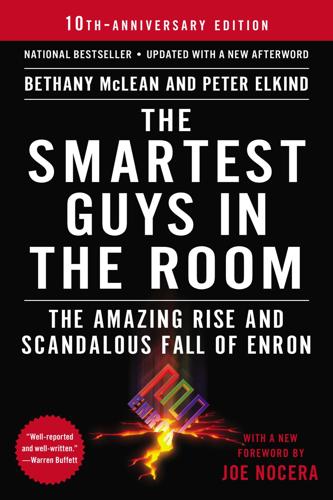
The Smartest Guys in the Room
by
Bethany McLean
Published 25 Nov 2013
The lawyers still hadn’t decided if Belden’s actions were illegal or not, but by that point, several lawsuits seeking class-action status had been filed in San Diego against Enron and other power companies. “We were stopping because the heat was too hot,” says Sanders. By then, though, Belden had other things on his mind: he and his wife were waiting for their first baby (a boy) to arrive. On December 21, a friend e-mailed him: “Hey you must be going crazy with the California energy crisis! Is SoCal and PCG going out of business or what???????” Belden wrote back: “any day now . . . the official due date is christmas. i’m ready. sue is ready. bring it on. work is crazy! pcg and eix are running out of cash. it’s not a pretty situation. those safe utility bonds aren’t quite so safe anymore . . .”
…
Part of the problem was that EES hadn’t done much more than guess at the energy loads its customers would require. Part of it was those faulty price curves, with their excessively optimistic assumptions. Part of it was the failure to hedge. And part of it was that EES hadn’t recognized the enormous credit risk it faced in California. When the California energy crisis threw Pacific Gas & Electric into bankruptcy, the utility owed Enron hundreds of million of dollars. Much of that money was owed to EES. As Curry began uncovering problems—and word filtered up from other sources—Rick Buy also became deeply concerned. “Is there light at the end of the tunnel?”
…
And the broadband team, with its huge overhead, had run out of ways to create earnings. This was a business worth $36 billion? Enron had negotiated the sale of Portland General to Sierra Pacific for $2.1 billion. It was supposed to be a sure thing. But as a result of the new California laws triggered by the state’s energy crisis, Sierra Pacific was barred from sell- ing generating plants it needed to unload in order to fund the acquisition. It took until April for Enron to announce what everyone already suspected: the deal was off. California was troublesome in other ways. Questions were swirling about how much money Enron’s traders were making, and on Wall Street, there were just as many questions about how much money EES was losing in the state.

How Capitalism Saved America: The Untold History of Our Country, From the Pilgrims to the Present
by
Thomas J. Dilorenzo
Published 9 Aug 2004
In essence, the deregulation of oil and gas prices, and the dismantling of the DOE’s bizarre, central planning–style allocation schemes, reintroduced a strong dose of capitalism into the oil and gas industries. The natural consequence was an almost immediate end to the “energy crisis” that had been fabricated purely by government policy. Once again, capitalism saved America from the follies of interventionism. CALIFORNIA’S REGULATION-INDUCED ENERGY CRISIS Sadly, our government often fails to heed the lessons of the past. Sure enough, in the late 1990s government officials created yet another energy crisis with their foolish regulatory policies. And once again they wrongly blamed the problem on deregulation. The electric power crisis that plagued California beginning in the late 1990s is commonly cited in calls for further government regulation.
…
And yet California’s politicians and environmentalists blamed the whole mess—which they were responsible for—on greedy out-of-state energy suppliers. Such talk was completely irrational. In fact, although the same suppliers did business in many states besides California, no other state was the victim of such “greed.” California’s energy crisis was perfectly predictable. Just as predictable were the cries from the environmentalists and many other anticapitalists that greedy capitalists were to blame for everything. Still, the anticapitalists have been remarkably successful in their propaganda campaign, since we so often hear the dubious claim that government deregulation is responsible for any sort of energy crisis.
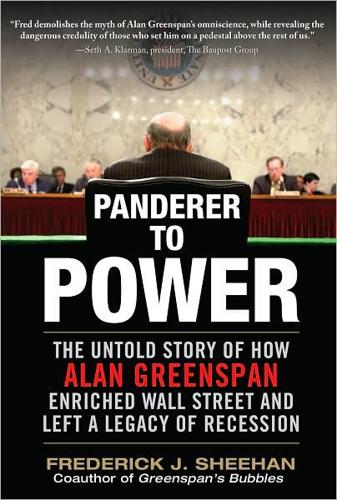
Panderer to Power
by
Frederick Sheehan
Published 21 Oct 2009
Stevenson, “Expansive Role for Greenspan Brings Out Critics of Fed’s Chief,” New York Times, October 11, 2001. 34Danny Hakim, “Detroit’s Big Three May Shuffle as Chrysler Struggles,” New York Times, September 5, 2001, p. C4 35 “What’s News,” Wall Street Journal, September 11, 2001, Front page. 36 Alan Cowell, “California Energy Crisis Hits Scottish Power,” New York Times, September 11, 2001, p. W1. 37Senate Committee on Banking, Housing, and Urban Affairs, “The Condition of the Financial Markets,” September 20, 2001. Meanwhile, patriotism was taking a bizarre form. William McDonough, president of the New York Federal Reserve, made a most unbankerly proposal: “What we dearly want is for Americans to behave like Americans—to do the patriotic thing and go out and spend.”38 President Bush told Americans to “get down to Disneyworld.”39 Alan Greenspan explained the faltering economy to the Senate: “During the past week, of course, the level of activity has declined.
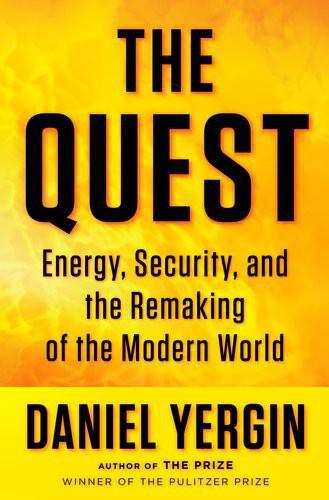
The Quest: Energy, Security, and the Remaking of the Modern World
by
Daniel Yergin
Published 14 May 2011
Sioshansi and Wolfgang Pfaffenberger (Oxford: Elsevier, 2006), p. 331 (“untested system”); Sweeney, The California Electricity Crisis, p. 203 (“20 minutes,” “plunder”). 13 Sweeney, The California Electricity Crisis, p. 136 (“more electricity they sold”). 14 Sweeney, The California Electricity Crisis, pp. 224–26, 280; interviews. 15 Federal Energy Regulatory Commission, Report on Plant Outages in the State of California, February 1, 2001 (“did not discover”). 16 Houston Chronicle, March 22, 2007; Los Angeles Times, June 16, 2002 (for the traders). For the fall of Enron, Kurt Eichenwald, Conspiracy of Fools: A True Story (New York: Broadway Books, 2005) and Bethany McLean and Peter Elkind, The Smartest Guys in the Room: The Amazing Rise and Scandalous Fall of Enron (New York: Portfolio, 2004). 17 James Sweeney, “The California Energy Crisis,” Conference on Ethics and Changing Energy Markets, Notre Dame University, October 28, 2004. 18 Arnold Schwarzenegger, inauguration speech, Sacamento, CA, November 17, 2003; CNN.com, October 7, 2003 (“slow to act”); New York Times, November 12, 2003 (“bummer”). 19 Interview with Joseph Kelliher. 20 Jone-Lin Wang, “The Power Generation Landscape and Recent Developments,” U.S.
…
The California Electricity Crisis. Stanford: Hoover Institution Press, 2002. ———. “California Electricity Restructuring: The Crisis and Its Aftermath.” In Electricity Market Reform: An International Perspective. Edited by Fereidoon P. Sioshansi and Wolfgang Pfaffenberger. Oxford: Elsevier, 2006. ———. “The California Energy Crisis.” Conference on Ethics and Changing Energy Markets. Notre Dame University. October 28, 2004. Talbott, Strobe. “A Farewell to Flashman: American Policy in the Caucasus and Central Asia.” Speech. July 21, 1997. ———. The Russia Hand. New York: Random House, 2002. Talmadge, Caitlin. “Closing Time: Assessing the Iranian Threat to the Strait of Hormuz.”

What Should I Do With My Life?
by
Po Bronson
Published 2 Jan 2001
Only a small number of people have thirty grand to outfit their house and the patience to wait thirty years before that investment is in the black. Jumping into the solar energy business doesn’t make economic sense. Or, I should say, being in the solar business means counting on a supply of clients who willingly disregard the bottom line. Stephen knew that, and he was in no position to fight those economics. When the California energy crisis struck, he thought this was his chance. Rolling blackouts left neighborhoods without electricity, and gasoline prices shot up fifty cents a gallon. Independent service operators were asked to testify before Congress. News of the crisis dominated the front pages. The public was suddenly interested in alternative energy sources.
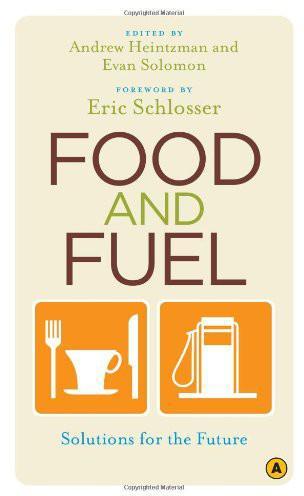
Food and Fuel: Solutions for the Future
by
Andrew Heintzman
,
Evan Solomon
and
Eric Schlosser
Published 2 Feb 2009
The published version and a heavily annotated hypertext version are both available at http://www.rmi.org/sitepages/pid171.php. 11. Simon Beavis, “Volkswagen Unveils World’s First 1 Litre Car,” May 24, 2002, http://www.wbcsdmobility.org/news/cat_1/news_106/index.asp. 12. Hal Harvey, Bentham Paulos, and Eric Heitz, “California and the Energy Crisis: Diagnosis and Cure,” The Energy Foundation, March 8, 2001, http://www.ef.org/california/downloads/CA_crisis.pdf. 13. New York Times, May 6, 2001. Cheney also said, “Conservation may be a sign of personal virtue, but it is not a sufficient basis for a sound, comprehensive energy policy.” 14.
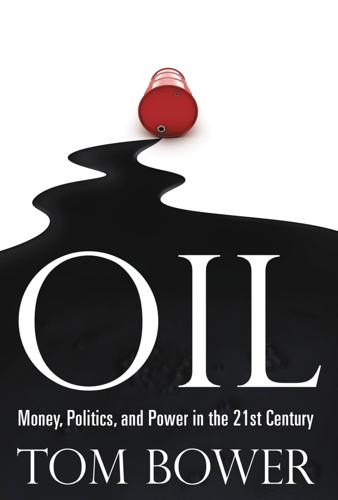
Oil: Money, Politics, and Power in the 21st Century
by
Tom Bower
Published 1 Jan 2009
Amaranth’s traders, using their $8 billion fund, nevertheless continued to bet on a shortage. Tilting the market amid huge volatility, the future price of natural gas rose. Asked for an explanation, officials at Nymex and CFTC denied that speculators were influencing prices or stability. Although five years earlier, in 2000 and 2001, Enron’s traders had created California’s energy crisis by transmitting power out of the state and selling it back to it at higher prices while celebrating the high life in Houston’s steak houses and nightclubs, the regulators assumed that hedge funds made the market transparent and honest. Their complacency was surprising. Usually, any trader dealing over 12,000 natural gas contracts in one month would be subject to investigation; but during 2006 Amaranth held 100,000 short contracts in one month, representing 5 percent of all the natural gas used by the US in a year.

A Brief History of Neoliberalism
by
David Harvey
Published 2 Jan 1995

Green Tyranny: Exposing the Totalitarian Roots of the Climate Industrial Complex
by
Rupert Darwall
Published 2 Oct 2017
Thanks in large part to green antigrowth ideology, hardly any new generating capacity had been built in the last two decades of the twentieth century. Between 1990 and 1999, California’s generation capacity decreased by 2 percent while consumption increased by 11 percent. Aging generators, a diminishing capacity margin, and aggressive environmental regulation set the stage for California’s 2000–2001 energy crisis. Toward the end of 2000, a significant amount of generating capacity was undergoing maintenance. Low water levels in the Pacific Northwest reduced hydroelectric output, and several gas-fired plants had used up their pollution credits and would be liable to fines if used. Preserving grid stability therefore necessitated rotating blackouts.
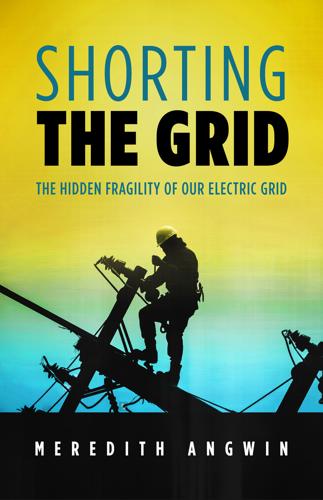
Shorting the Grid: The Hidden Fragility of Our Electric Grid
by
Meredith. Angwin
Published 18 Oct 2020
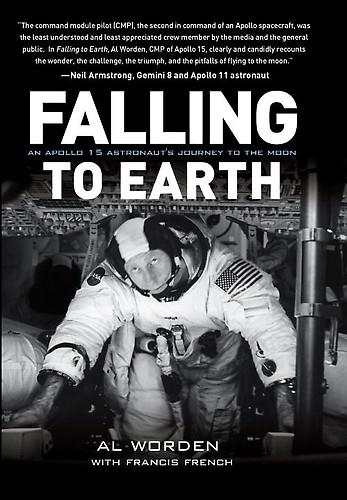
Falling to Earth
by
Al Worden
Published 26 Jul 2011
Why not join me at Ames, I suggested? There was plenty going on there in the field of life sciences, her specialty. I helped set up an interview with our medical operations team, and they loved her. I flew to Houston and drove Dee and her belongings—including her dog—out to California. It was the middle of the energy crisis, so we drove as long as we could, then waited in long lines at the gas stations until we could scrounge more fuel. It was a fun adventure, and we eventually made it to Ames. Dee has never left. She still works there as one of NASA’s longest-serving employees—and one of my best friends.

The Man Behind the Microchip: Robert Noyce and the Invention of Silicon Valley
by
Leslie Berlin
Published 9 Jun 2005
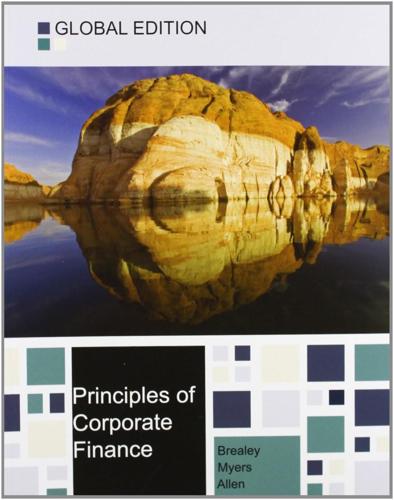
Principles of Corporate Finance
by
Richard A. Brealey
,
Stewart C. Myers
and
Franklin Allen
Published 15 Feb 2014
Commercial paper in the United States has a maximum maturity of nine months, though most paper is for fewer than 60 days. Buyers generally hold it to maturity, but the company or dealer that sells the paper is usually prepared to repurchase it earlier. Commercial paper is not risk-free. When California was mired in the energy crisis of 2001, Southern California Edison and Pacific Gas and Electric defaulted on $1.4 billion of commercial paper. And in 2008 Lehman Brothers filed for bankruptcy with $3 billion of paper outstanding. But such defaults are rare. The majority of commercial paper is issued by high-grade, nationally known companies,53 and the issuers generally support their borrowing by arranging a backup line of credit with a bank, which guarantees that they can find the money to repay the paper.54 Because investors are reluctant to buy commercial paper that does not have the highest credit rating, companies cannot rely on the commercial paper market to provide them always with the short-term capital that they need.
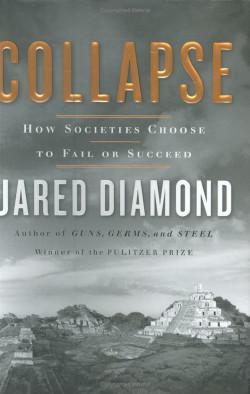
Collapse
by
Jared Diamond
Published 25 Apr 2011
No California resident or elected official has suggested a practical solution to the long-standing contradiction, reminiscent of Dominicans' attitude towards Haitians, between needing immigrants as workers and otherwise resenting their presence and their own needs. Southern California is a leading contributor to the energy crisis. Our city's former network of electric streetcars collapsed in bankruptcies in the 1920s and 1930s, and the rights of way were bought up by automobile manufacturers and subdivided so as to make it impossible to rebuild the network (which competed with automobiles). Angelenos' preference for living in houses rather than in high-rise apartments, and the long distances and diverse routes over which employees working in any given district commute, have made it impossible to design systems of public transportation that would satisfy the needs of most residents.

Collapse: How Societies Choose to Fail or Succeed
by
Jared Diamond
Published 2 Jan 2008
No California resident or elected official has suggested a practical solution to the long-standing contradiction, reminiscent of Dominicans’ attitude towards Haitians, between needing immigrants as workers and otherwise resenting their presence and their own needs. Southern California is a leading contributor to the energy crisis. Our city’s former network of electric streetcars collapsed in bankruptcies in the 1920s and 1930s, and the rights of way were bought up by automobile manufacturers and subdivided so as to make it impossible to rebuild the network (which competed with automobiles). Angelenos’ preference for living in houses rather than in high-rise apartments, and the long distances and diverse routes over which employees working in any given district commute, have made it impossible to design systems of public transportation that would satisfy the needs of most residents.